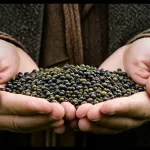Essential Ingredients for Lancashire Hotpot
Lancashire hotpot is a classic British stew known for its rich flavours and hearty composition. At its core, the traditional Lancashire hotpot relies on a few fundamental ingredients that create its unmistakable character. The essential Lancashire hotpot ingredients include tender cuts of lamb, sliced potatoes, onions, and a well-seasoned stock. Lamb is preferred for its robust flavor, and it forms the heart of the dish, contributing depth and authenticity.
Onions are crucial for sweetness, balancing the richness of the meat, while the sliced potatoes cover the casserole, allowing them to absorb juices and brown for texture contrast. The stock—usually lamb or beef—binds these elements together, ensuring a moist and flavorful stew.
Also to discover : How can you achieve the ideal texture in a spotted dick?
Beyond the basics, traditional Lancashire hotpot recipes often incorporate optional ingredients such as carrots and lamb kidneys, which add complexity and richness. Fresh herbs like thyme or bay leaves introduce aromatic notes that enhance the overall taste profile. These additions remain faithful to hotpot recipe basics and respect the dish’s heritage.
For those with specific dietary preferences, recommended substitutes or variations exist. For example, mutton can stand in for lamb, and vegetable stock can replace meat-based options, allowing flexibility without losing the essence of Lancashire hotpot. Understanding these core and optional components is essential for crafting a successful and satisfying hotpot.
Also read : How Can British Cuisine Transform with Modern Cooking Techniques?
Step-by-Step Preparation and Cooking Instructions
Mastering the Lancashire hotpot recipe begins with precise preparation and layering of ingredients to build robust flavour. Start by trimming and cutting the lamb into uniform pieces, which ensures even cooking. Lightly brown the meat in a hot pan to seal in juices and develop a rich, savory base. Next, layer sliced onions evenly in the casserole dish, as they soften and sweeten during cooking, complementing the lamb’s intensity.
When arranging the Lancashire hotpot ingredients, place the browned lamb over the onions, then add optional vegetables like carrots or kidneys for additional depth. The top layer consists of thinly sliced potatoes, arranged to completely cover the filling. This potato topping protects the stew and crisps beautifully during baking, crucial for the authentic texture of the traditional Lancashire hotpot.
Cooking techniques play a pivotal role in making the homemade hotpot method successful. Preheat the oven to a moderate 160–170°C (320–340°F). Cover the dish with a lid or foil to maintain moisture while the flavours meld during the initial hour. Remove the cover near the end to allow the potato topping to turn golden and crisp, a signature of this beloved dish.
Timing is essential: cook the hotpot for approximately 2 to 2.5 hours, allowing the lamb to become tender and the stock to reduce to a nourishing glaze. For best results, check occasionally and baste the potatoes with the cooking juices to prevent drying. Serving the hotpot hot from the oven, directly in its casserole, enhances presentation and maintains warmth.
Following this careful step-by-step process guarantees a satisfying and flavourful Lancashire hotpot recipe, highlighting the harmony between the core ingredients and traditional preparation methods.
Tips to Enhance Flavour and Texture
Mastering the art of maximizing hotpot flavour relies heavily on selecting the right cuts of meat and preparing a rich stock. For a traditional Lancashire hotpot, choose lamb shoulder or neck as these cuts provide the perfect balance of tenderness and marbling. Browning the meat before stewing is key—it locks in juices and develops the deep, savory notes essential for authentic taste. When preparing the stock, simmer lamb bones with aromatic vegetables and herbs for several hours to extract full-bodied flavor, elevating the stew’s richness.
Achieving the perfect potato topping is another Lancashire hotpot secret that dramatically influences texture. Slice potatoes uniformly thin and soak them briefly in cold water to remove excess starch, which prevents them from becoming gummy. Before layering, season the potatoes with salt and pepper. During cooking, basting the potatoes with the hotpot juices ensures a crisp and golden crust that contrasts beautifully with the tender filling below.
Enhancing depth in the dish can be accomplished through fresh herbs and thoughtful seasoning. Adding thyme, bay leaves, or rosemary infuses the stew with aromatic complexity, complementing the hearty meat and vegetables. Season gradually with salt and pepper, tasting as you go, since the stock concentration changes over cooking time. Optional ingredients, such as diced carrots or lamb kidneys, introduce subtle sweet and robust flavors, enriching the hotpot’s profile without overpowering the core components.
With careful attention to meat quality, stock preparation, potato topping technique, and seasoning, these cooking tips for hotpot help in delivering an unforgettable Lancashire hotpot experience that honors tradition while satisfying modern palates.
Serving Suggestions and Customization
When serving Lancashire hotpot, traditional accompaniments significantly enhance the overall dining experience. Classic sides like pickled red cabbage provide a tangy contrast that cuts through the richness of the stew, balancing the hearty flavors with acidity. Crusty bread is another staple, perfect for soaking up the flavorful stock and making the meal more filling. These accompaniments remain true to the dish’s roots and complement the traditional Lancashire hotpot beautifully.
Exploring variations of Lancashire hotpot offers flexibility for different tastes and dietary needs. For example, substituting lamb with beef or a meat-free alternative such as mushrooms or root vegetables aligns well with modern dietary adaptations without compromising the essence of a hotpot. Additionally, incorporating different herbs or seasoning mixtures can introduce new flavour profiles while respecting the hotpot recipe basics.
Proper portioning is important for both presentation and storage. Serving each portion with a balanced ratio of meat, vegetables, and crispy potato topping ensures satisfaction. Leftovers should be refrigerated promptly and reheated gently to maintain texture and flavour. This approach supports enjoying Lancashire hotpot beyond the initial meal, making it a versatile and convenient dish for home cooks.







